Are you trying to decide between a digital light processing (DLP) projector and a light-emitting diode (LED) projector? If so, you are likely feeling overwhelmed with the plethora of information out there – it can be hard to know what is important or not. Rest assured, this article will provide an in-depth comparison of DLP vs. LED projectors, breaking down factors like resolution, brightness, sound quality, and price so you can make the most informed decision for whatever your needs may be.
How does a Projector work?
Projectors use a combination of lenses and mirrors to project an image onto a screen or wall. The projector has two main components: the light source, usually an LED bulb or lamp, and the projection lens system.
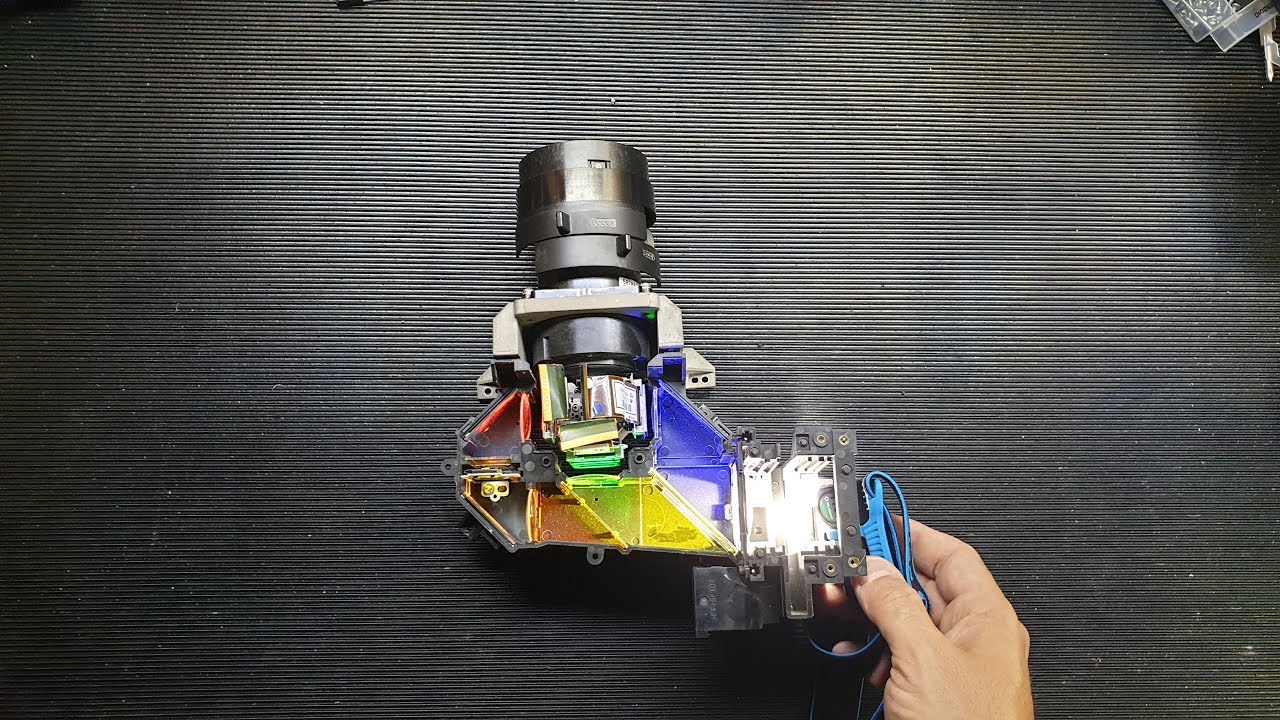
The light source creates a bright beam of light which is then magnified and projected through the lens system. This lens system uses a combination of curved convex lenses and reflective surfaces such as mirrors to focus and direct the light onto the desired surface.
Most modern projection systems also use advanced digital technologies such as liquid crystal displays (LCDs) or digital light processing (DLP) technology to further enhance images before they are projected onto a screen or wall. These advanced technologies allow for sharper pictures with smoother transitions, better contrast, and color accuracy.
Projectors can be used in a range of settings, from home theater and business presentations to classrooms or concert halls. They are also becoming increasingly popular for gaming and virtual reality applications. Whether you’re looking for an immersive experience or just a simple way to share presentations with an audience, a projector is a perfect choice [1].
What are the Different Types of Projectors?
There are several different types of projectors available on the market today. Here’s a quick guide to help you understand the various options:
- DLP (Digital Light Processing) Projectors – These use arrays of tiny mirrors arranged in circular rings called Digital Micromirror Devices (DMDs). These mirrors are used to reflect the light source and create a projected image.
- LCD (Liquid Crystal Display) Projectors – LCD projectors use liquid crystals to control the intensity of light that passes through each pixel in an image, allowing for better contrast, clarity, brightness, and color accuracy.
- LED (Light Emitting Diode) Projectors – LED projectors use red, green, and blue LEDs instead of lamps or bulbs as their light source. This results in improved energy efficiency and less heat output than other types of projector systems.
- Portable Projectors – Portable projectors are designed for easy setup and portability. They often come with built-in speakers and Wi-Fi or Bluetooth connectivity, making them perfect for business meetings and presentations in any location.
- Short Throw Projectors – Short throw projectors offer a much wider range of available projection sizes while still maintaining a relatively short distance between the projector and the wall or screen. This makes them ideal for small spaces or tight locations where you need to project a large image without putting the projector too far away.
- 4K Projectors – 4K projectors provide an incredibly realistic image with up to four times the resolution of traditional HD projectors. 4K technology is becoming increasingly popular due to its ability to deliver stunning visuals with tremendous detail and clarity.
- Interactive Projectors – Interactive projectors use infrared sensors that can detect when an object touches the projected image. This type of projector is often used in classrooms and boardrooms to give users the ability to interact with their presentations.
No matter which type of projector you choose, they all have one thing in common – they allow you to share your ideas, stories, and visuals with an audience vividly and engagingly. Whether it’s for business or pleasure, projectors are the perfect tool to add visual impact to your presentations [2].
How to choose a Projector for your home needs?
Choosing the right projector for your home needs can be tricky, but with a few simple tips, you can make sure you have the perfect fit.
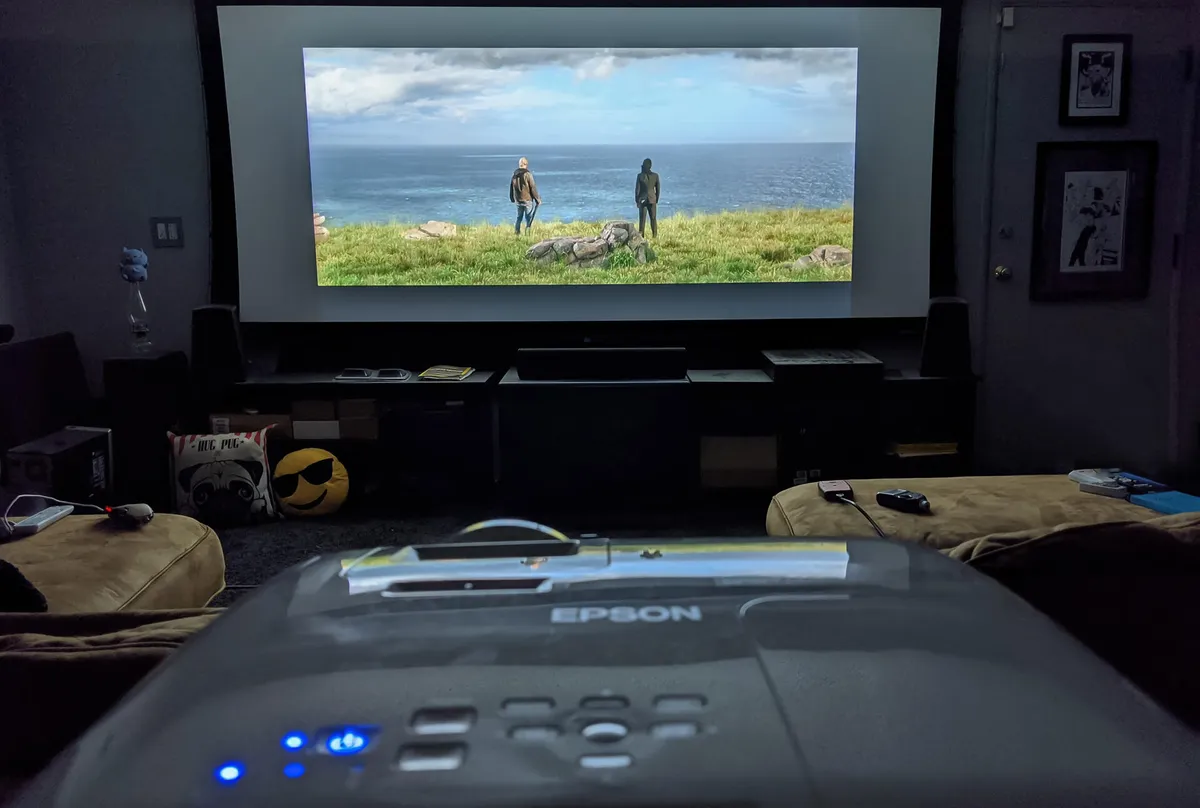
First, consider the size and shape of the room where you’ll be projecting. The size and type of projector you’ll need depends on how far away from the wall or screen it will be placed and what size image you want to achieve. If you plan to use a large screen or project onto an entire wall, you’ll need more lumens (brightness) than if it’s just a small section of a room.
Also, take note of how bright your room is – if it has lots of ambient light, then brighter projectors are best suited for a clear display.
Next, think about the type of projection you need.
On the other hand, if you’ll be presenting slides and data visuals in a professional capacity, then an LED or DLP projector may be a better fit.
Finally, don’t forget to factor in speaker quality and connectivity features. You’ll want projectors with good audio output capabilities so that viewers can clearly hear whatever they’re looking at.
Additionally, make sure your projector has plenty of ports to connect external devices like gaming consoles and DVD players.
What is a DLP Projector?
A DLP (Digital Light Processing) projector is a device that projects an image onto a screen or other surface using tiny mirrors and a light source. It can be used to create large, bright images for movie theaters, classrooms, and boardrooms.
The technology behind a DLP projector is based on the principle of ‘Micro-electromechanical systems’, which uses the vibrations of microscopic mirrors to reflect an image onto the projection area. A single-chip digital micromirror device (DMD) is utilized in each projector, containing millions of tiny mirrors arranged in an array.
Each mirror reflects light from the lamp toward its designated pixel on the projection surface, creating a full-color image. By rapidly switching back and forth between two colors, a full-color spectrum can be created.
DLP projectors offer several advantages when compared to traditional LCD (Liquid Crystal Display) projectors. For example, they are more compact and lightweight, making them easier to transport and set up.
Additionally, the image quality is usually sharper than that of an LCD projector due to its use of tiny mirrors. The lamp life is also significantly longer than most LCD models, resulting in fewer costly replacements over time.
Last but not least, DLP projectors tend to have less “ghosting” from moving objects than their LCD counterparts.
Overall, DLP projectors provide a great way to display images with vibrant color accuracy and superior clarity for any application or budget. Whether you need something for the classroom, boardroom, or home theater, a DLP projector is a perfect choice [3].
What is a LED Projector?
A LED projector is a type of digital projector that uses light-emitting diodes (LEDs) as its light source. This technology has been around for some time, but recently it has gained popularity due to the numerous advantages it offers over other types of projectors.
For example, LED projectors consume less power than traditional bulbs or laser-based models, they don’t require frequent lamp replacements, and they are much lighter and more compact. In addition, LED projectors tend to have better color accuracy and higher brightness levels than other types of projectors.
As a result, this makes them highly suitable for home entertainment use as well as professional presentation purposes.
LED projectors come in a variety of sizes, from ultra-small pocket projectors to larger models that can be used for large venues. Depending on the model and its features, LED projectors can range in price from a few hundred dollars up to thousands of dollars.
However, with the advancements in technology, LED projector prices have become more affordable making them accessible to everyone.
Whether you need an LED projector for home entertainment or professional use, there are many different types available to choose from. It is important to consider all of your options before making a final decision as each type has its advantages and disadvantages.
Additionally, it is also important to understand what type of connections your projector will need to properly connect it with your other devices such as laptops and game consoles [4].
Difference Between DLP and LED for Projection
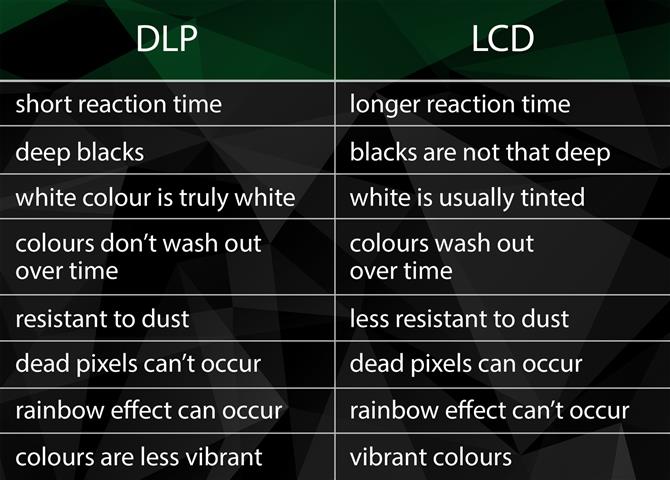
Light Source Life for Projectors
Projectors are typically powered by either a Digital Light Processing (DLP) or Light Emitting Diode (LED) light source. Each of these sources has its own advantages and drawbacks, but one of the main differences to consider is light source life.
DLP projectors use an array of tiny mirrors to direct projected light onto the screen. These mirrors reflect more intense, richer colors than LED projectors, however, they don’t last as long; DLP bulbs can last anywhere between 2,000 and 6,000 hours before needing replacement.
LED projectors may not offer as intense of a color palette and can sometimes have issues with shadows, but they are much more energy-efficient and require less frequent bulb replacements.
Both technologies have their own advantages and disadvantages, so it’s important to consider your specific needs when choosing the best projector for you – light source life expectancy is one of those considerations. With careful use and maintenance, either type of projector should provide reliable performance for many years to come.
Illuminating Projections
No matter what type of projector you choose, the most important factor is lumens. Lumens refer to light intensity and are measured in ANSI (American National Standards Institute) units. The greater the number of lumens a projector has, the brighter it is; this means that it can project an image at a larger size or with more clarity in higher ambient light environments.
In addition to lumens, contrast ratio also plays an important role when selecting a projector for your space. The contrast ratio measures how bright whites are compared to blacks on your projected image. A high contrast ratio will give you richer details, sharper lines, and more intense colors for more immersive viewing experiences – so it’s something worth considering when shopping for a new projector.
Color Consistency in DLP and LED Projection
When it comes to color consistency, DLP and LED projectors both have their pros and cons. DLP projectors use a single light source to create projected images, which ensures that all colors remain consistent throughout the entire lifespan of the bulb – even when dimmed.
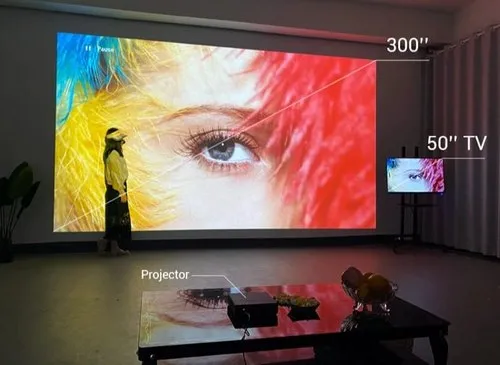
However, this also means that any shift in temperature or discoloration will affect the entire projection at once.
LED projectors are known for having excellent color accuracy, but some users may experience color shifts over time as individual LEDs age differently from one another. These shifts can be offset by regularly calibrating the projector’s settings, however, so this may not be an issue depending on your usage or needs. Ultimately, there is no clear winner here – it comes down to personal preference and intended use.
Color Accuracy and Black Levels on Projectors
The quality of the projected image also depends on color accuracy and black levels. Color accuracy measures how accurately a projector can reproduce colors from its source, while a projector’s black level is determined by the darkest shade of black that it can produce.
Both DLP and LED projectors offer excellent color accuracy, however, DLP projectors typically have better black levels due to their single light source design.
This means that they can produce deeper blacks than LED projectors in most instances, which may be important for some users or applications. Ultimately, it comes down to personal preference and intended use when deciding between these two technologies.
FAQ
Which projector is better, DLP or LED?
The answer to this question depends on your personal needs and budget. Generally, LED projectors are cheaper than DLP projectors, but they typically offer lower resolution, poorer contrast ratio, a narrower color range, and a shorter lifespan. On the other hand, DLP projectors generally provide higher resolutions, better contrast ratios, and wider color ranges with longer lifespans.
It’s important to consider your requirements when deciding which projector is right for you. If you need high-end performance with superior brightness and image quality then a DLP projector is likely the best choice; however, if you’re working with a limited budget then an LED projector may be the better option.
Ultimately it comes down to what features are most important for your specific application.
Why is an LCD projector better than DLP?
When compared to DLP projectors, LCD projectors generally offer better colors and more accurate reproduction of dark scenes. Additionally, LCD projectors tend to have a wider range of resolutions and aspect ratios available than what is typically found with DLP models.
On the downside, however, LCD projectors often suffer from the “screen door” effect where individual pixels can be seen when viewed at close distances.
Also, due to the way images are created by an LCD projector, they may lack the same level of color saturation that is found in many DLP models. Ultimately it’s a matter of personal preference but if you want vibrant colors and superior image quality then a DLP projector may be your best choice.
How do I set up my projector?
Setting up a projector is fairly straightforward and similar across different models. First, you will need to find an appropriate location for the projector that won’t cause any problems with ambient light or external noise. You’ll also want to make sure that the image projected onto your screen is in focus and at the correct aspect ratio (4:3 or 16:9).

Once you have all of these factors taken care of, you can connect your laptop or another device to the projector using either an HDMI cable or VGA cable depending on what ports are available on both devices.
Finally, adjust the settings on your projector to match those of your device, and then start projecting!
What is DLP vs. LED vs. LCD projector?
DLP (Digital Light Processing) is a projection technology that uses microscopic mirrors to project light onto a screen. LED (Light Emitting Diode) projectors are the newest type of projector, and they offer improved color accuracy and brightness while also consuming less energy than their DLP counterparts.
Finally, LCD (Liquid Crystal Display) projectors use liquid crystals to modulate light and create an image on the screen.
What is the best resolution for a projector?
The best resolution for a projector depends on several factors, including the size of the screen you are projecting onto as well as your budget. Generally speaking, a 1080p projector will provide the best image quality, but if you are working with a limited budget then a 720p projector may still offer acceptable results.
If you need to project onto a very large screen (over 100 inches) then it is recommended to use a 4K resolution projector for optimal image quality.
It’s important to note that whichever resolution you choose, make sure that both your source device and projector support it to get the best results.
Useful Video: DLP vs LCD Projectors – What’s the difference?
Conclusion Paragraph
Which is better: DLP or LED Projector? Before making a buying decision, it is important to consider the particular needs of your business or organization. DLP projectors offer superior image quality and are often less expensive than LED models. They also typically last longer and require less maintenance. However, LED projectors are typically more energy efficient and provide brighter images with increased clarity.
Ultimately, when choosing between DLP and LED projectors for your business or organization, it comes down to which features are most important for meeting your needs. Consider the cost, lumens rating, resolution capabilities, warranty, and size of the projector before making your decision. With all of these factors in mind, you should be able to find a projector that will meet your needs without breaking the bank.
References
- https://www.makeuseof.com/how-does-a-projector-work/
- https://www.newvisiontheatres.com/types-of-projectors
- https://www.viewsonic.com/library/entertainment/what-look-for-dlp-projector/
- https://yourbusiness.azcentral.com/led-projector-work-2839.html




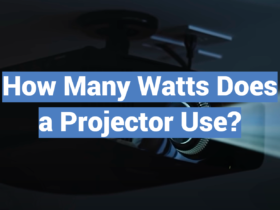
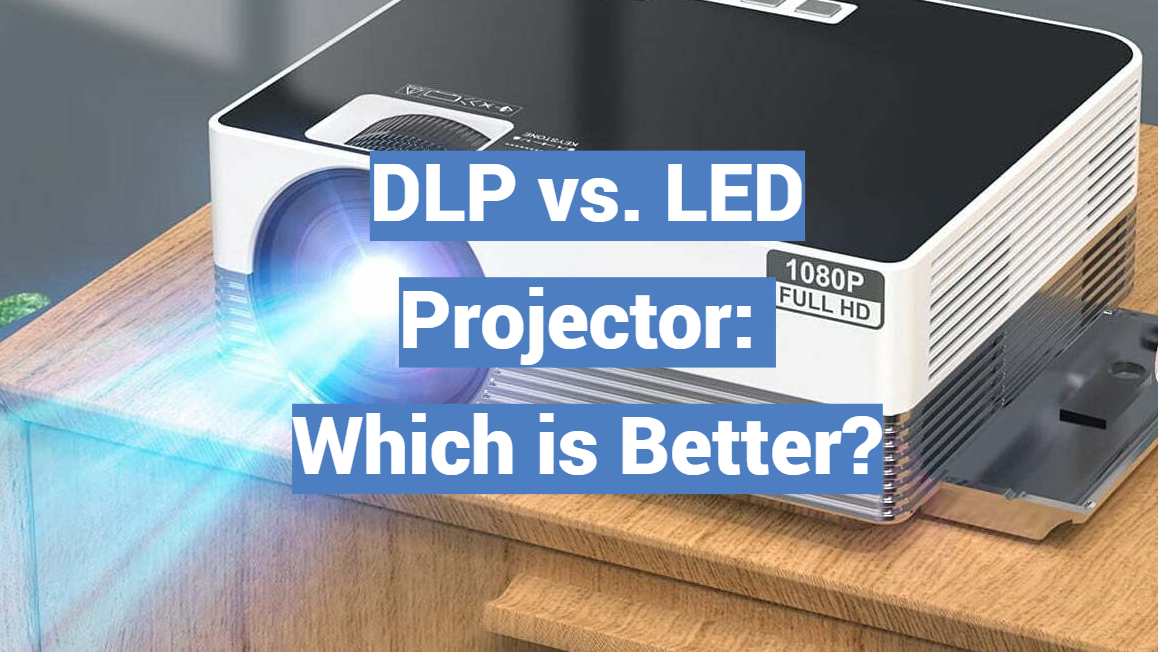
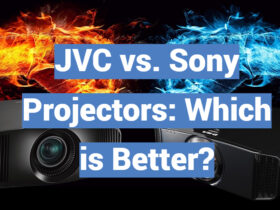
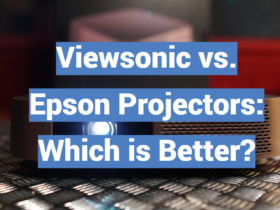
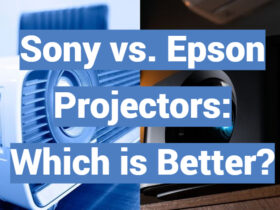
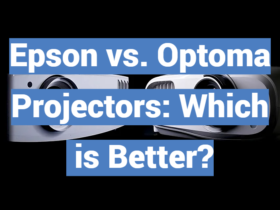
Leave a Review